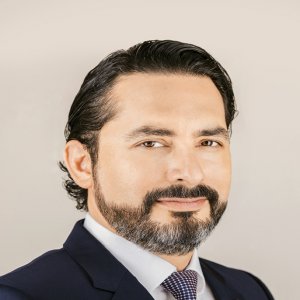In Mexico for the Long Term but Need Continuity

STORY INLINE POST
Q: What is Great Panther’s goal in Mexico, and how might the governmental impact that?
A: Great Panther has been operating in Mexico for 14 years. Our goal is to be here for the long term but we need to ensure continuity in laws, taxes and technical processing of licenses. Taxes also need to be reasonable, and in Mexico taxes already are relatively high, so we hope they will not be raised further. We recently acquired the Tucano gold mine in Brazil, which will have a significant impact on our production. Before the acquisition, we were producing 4 million ounces of annual silver equivalent in Mexico (50,000 gold equivalent ounces) and now we will add 150,000 ounces of gold from Brazil from 2019 onward. This positions us as an intermediate gold producer. Our Peruvian project, Coricancha, is advancing into the construction phase, and we hope to fully restart it next year. This mine will produce approximately 3 million ounces of silver equivalent (or 40,000 ounces of gold equivalent) per year.
We have a consistent strategy in our mines. Responsible and safe production is our first priority. We focus on gold and silver. Then comes size: we will produce 200,000 ounces of gold equivalent this year, while Peru will add 40,000 ounces of gold equivalent next year. Jurisdiction is another important element shaping our strategy. The company operates in Mexico, Brazil and Peru because they are good mining jurisdictions. They have a long mining history, established mining and geology universities, engineering and mining supply chains. Technical staff in the governments of these countries know how to manage mining concessions and the laws ensure mining rights and obligations are enforced. Specifically, we place importance on having continuity with this technical staff, no matter who is in government at any moment. We feel that Mexico and the other countries we operate in comply with these criteria.
Q: What are the specific projects in Mexico that Great Panther is investing in?
A: We have been investing in and expanding the Topia Mine in Durango. Production has increased from 1.1 million silver equivalent ounces in 2017 to around an expected 1.7 million silver equivalent ounces at the end of 2019, which makes it a nice asset for Great Panther. It is also important for the Topia community and we receive great support from the Durango government. It is a pretty good story, I think.
Q: What were the main elements of the strategy for achieving success at Topia?
A: The number one strategy is safety. We have improved our safety record at Topia and Guanajuato significantly through education and under the leadership of our Vice President of Operations in Mexico, Brian Peer. Topia is very remote. It is isolated in the Sierra Madre of Durango. I think we made a strong impact on the community and its culture. I feel very positive about the accomplishments there over the past two years. We hope to continue the improvement and growth in the coming years.
Q: Is it part of your strategy to make sure resources are replenished as you mine them?
A: Yes. We are averaging approximately 4 million ounces of silver equivalent in Mexico and 150,000 ounces of gold in Brazil per year, in addition to working on exploration to replace those ounces. By next year, we will have production from two mines in Mexico, one mine in Brazil and hopefully one mine in Peru. It is great to have steady production from multiple mines in multiple good jurisdictions.
Q: What are the best financial discipline practices for a mining company to achieve healthy and organic growth?
A: We measure everything in cash flow based on All-In Sustaining Costs (AISC), which is all of our capital and all of our operating costs. We need to make sure we have positive cash flow today from operations. Next is continuous improvement. For example, we want to get our AISC to US$1,000 per ounce today and to try and take it to below that level per ounce next year.
























